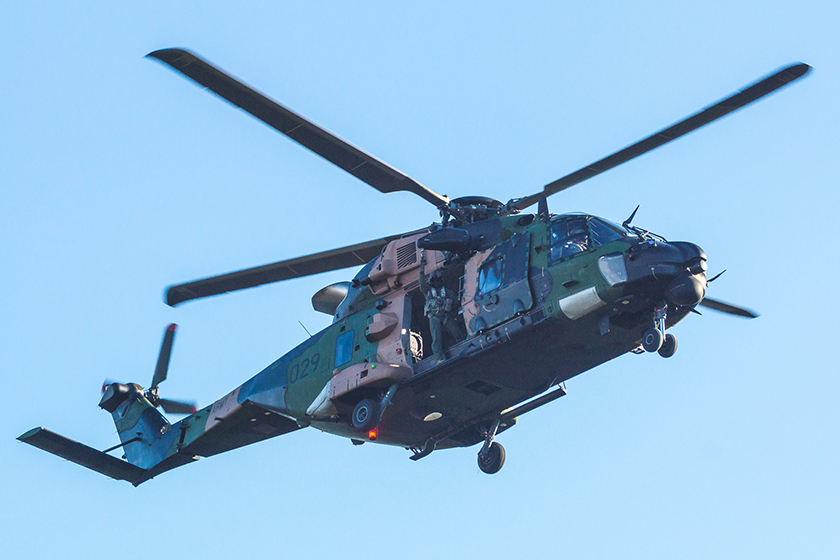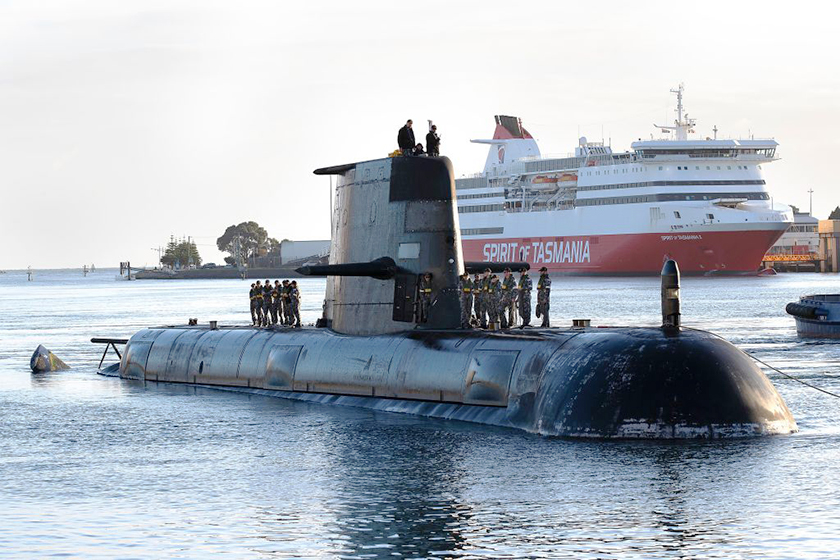Release of proposed ASX Corporate Governance Principles and...
The IPA is a member of the ASX Corporate Governance Council, which has been consulting on proposed changes to the...
READ MORE
For the first time, Australia’s annual defence budget has blown out to well over $50 billion. We spoke with two experts about how defence spending is calculated, and how return on investment is measured.

The Army's entire MRH-90 fleet was grounded after a crash in July that killed four ADF members. This is not the first trouble with the Army's MRH-90 Taipan fleet, which had last been grounded in March after a helicopter ditched into the water near Jervis Bay, NSW, injuring two ADF members.
The 2023-24 Defence Portfolio Budget Statement puts total defence resourcing at over $55 billion, or about $4.6 billion per month. Forward estimates come to $57 billion in 2024-25, $60 billion in 2025-26, and $63 billion in 2026-27.
How can a return on such great investment be offered or calculated?
Opinions differ, but John Blaxland, Professor of International Security and Intelligence Studies, and Director of Australian National University’s North America Liaison Office in Washington DC, says the return on an investment of around two per cent of GDP can be measured by what doesn’t happen.
“It’s a calculated risk-management approach to safety, security and stability, in order for us to continue to be prosperous,” Blaxland says.
Sam Roggeveen, Director of the International Security Program at the Lowy Institute and author of The Echidna Strategy: Australia’s Search for Power and Peace (Aug 2023, La Trobe University Press), agrees.
“Think about defence spending like insurance. The only difference is that defence spending materially changes the thing you’re insuring against,” he says.
“When you insure against theft, that doesn’t affect the behaviour of thieves. They don’t know or care whether you’re insured or not. But when you spend money on defence, you influence the thinking and behaviour of others.”
Blaxland explains that the main components of a $55 billion budget are relatively simple to break down into three broad categories.
“One is the cumulative effect of money set aside for ongoing operations. Then, there is the cost of operating defence in general, keeping it ticking over, hiring, retaining and training personnel, etc. Finally, there’s the acquisition of new kit and new systems, and implementing those new systems.”
Decisions around major equipment purchases, including submarines, aircraft and the systems on which they operate, are made with 10-year horizons in mind.
“That’s one of the reasons why strategy papers and white papers are so important, to steer the projected expenditure. The residual effect is long lasting,” Blaxland says.
“With the Collins submarines, for instance, we made the decision to buy them in the mid-1980s. And here we are, 40 years later, still operating them, and we will still have them 10 years from now.”
For better or worse then, the impacts of a generation of defence leaders’ decisions are felt by the next.
Blaxland believes that this is why decisions around defence spending are traditionally drawn out. They’re reviewed, scrutinised and deliberated on to an extreme extent, which is prudent for such a large, long-term and purposeful investment.
But things are changing. During a long period of relative peace locally, and without any real security threat, we have had the luxury of time to make such decisions.
“It’s been partly a function of living in peacetime and of living in a relatively non-threatening part of the world. But it’s also a function of technology and bureaucracy,” Roggeveen says.
“The ever-increasing complexity of weapons systems means those systems are becoming much more capable and much more expensive. So, you can buy fewer of them, but the stakes rise for the individual weapons platform you’re buying. The stakes rise, the complexity rises, and so does the difficulty in choosing what to buy.”
Roggeveen believes that the pace of decision-making is becoming more important now as China rises to become a new superpower. Its maritime power in particular is growing more quickly than the US or its allies can match.
“The International Institute for Strategic Studies estimates that between 2014 and 2018 alone, China built enough warships and auxiliaries to match the tonnage of the entire French Navy,” Reggeveen wrote in a Lowy Institute report on Defence spending.
“Rising Chinese influence in Australia’s neighbourhood is happening now.”
Blaxland also points out other risks that could lead to the need for protection, including environmental catastrophe, and the prospect of breakdown of law and order in neighbouring countries. Locally, risk of unrest increases as real incomes fall and inequality rises.
During decades of relative local peace (even as Australian forces served overseas) the Australia’s military has prided itself on being relatively small but punching above its weight.
“The Australian Defence Force has for generations focused on quality over quantity. We’ve not got a big defence force, we’ve got a boutique defence force. For that to be effective, it has to have the best kit you can buy,” Blaxland says.
“So, we have made decisions along the way to source bleeding edge technology that may not even be fully proven, but will likely pay off in the medium to long term. The Collins class submarines are an example of that.”

Royal Australian Navy’s Collins-class submarine HMAS Sheean arrives in Devonport, Tasmania on 22 April 2021.
The latest investment in submarine technology will come with a price tag between $268 billion and $368 billion. There is argument over whether Australia requires such a high-tech and bespoke defence solution.
“We insist that our circumstances are unique, that the weapons everybody else buys would simply not do for us,” Roggeveen says.
“We should be buying more off-the-shelf weapons and buying them more quickly, rather than insisting we build them locally and to our highly specific, bespoke needs.”
Roggeveen’s second dispute is with the strategic intent behind such investment – it doesn’t make the most of Australia’s greatest defence power – distance.
He says that rather than investing in long-range, nuclear-powered submarines, there’s value in making an enemy come to Australia, then making it difficult for that enemy to get beyond the country’s shores. The ‘echidna strategy’ of his book’s title refers to the animal’s defensive spikes – an effective deterrent against close-range attack.
“Beijing is closer to Berlin than it is to Sydney. At the core of Australia’s defence policy should be an effort to exploit distance,” Roggeveen says.
“But at the moment, we’re pursuing a defence strategy which, in a way, seeks to compress distance. Nuclear-powered submarines are effectively designed to operate at extremely long range and with long endurance, in other words to operate along China’s coast and to hem the Chinese navy in along its coastline. That’s why we’re building these things.
He argues that if China was ever to become a military threat to Australia, Australia would do well to leave traversing the vast distance between the two countries on China’s to-do list.
Distance is one point of contention that reveals part of the complexity in defence strategy. But the Defence portfolio operates across five domains – air, land, sea, space and cyber – and the complexity of the investment is clear.
Roggeveen suggests formal measures of success.
“For instance, when new weapons systems are introduced, we can measure whether they meet the operational parameters that the manufacturer had set out for them. Does it fly as far and as fast as they said it would? Does it carry the weapons they said it would? Most importantly, does it operate as reliably as they said it would?” Roggeveen says.
He cites a ‘rule of three’ for operational availability. For one submarine to be operational at any given time, three submarines are needed: one operational, one in long-term maintenance and one involved in a training activity.
“That availability for operational use is probably the most important measuring stick of whether we get value for the money we spend,” Roggeveen says.
Still, he does not suggest tossing out the ‘insurance policy’ approach that places the absence of conflict in the ‘return’ column.
“At the highest strategic level, we can only measure the effectiveness of the Australian Defence Force by what doesn’t happen. Have they deterred conflict?” Roggeveen says.
“For the first time in our lifetimes, we’ve got a great power in our region with vastly different national interests and strategic objectives to ours. That’s going to create friction, and Australia needs to prepare for that.”